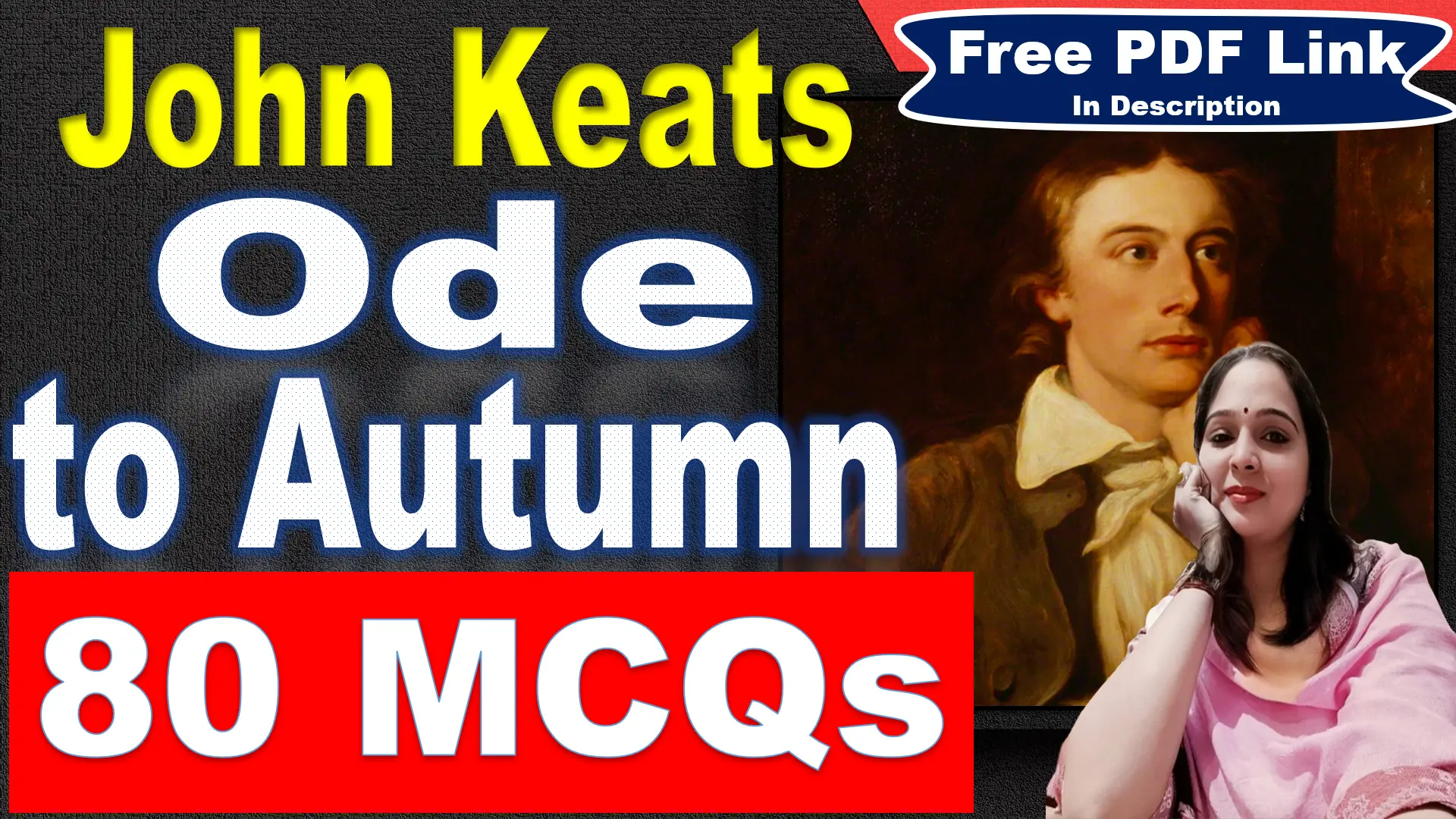Essay Type Questions
Write the critical appreciation of the poem.
Introduction
She Walks in Beauty is one of Lord Byron’s most famous lyric poems, written in 1814 and published in 1815 in Hebrew Melodies. The poem is a tribute to ideal beauty, inspired by Anne Beatrix Wilmot, the wife of Byron’s cousin, whose grace and charm deeply impressed him. Instead of focusing on passionate love, the poem admires both the physical beauty and the inner purity of the woman, portraying her as a perfect blend of light and darkness, elegance and innocence.
Central Idea
The poem explores the harmonious balance of physical beauty and inner virtue. Byron suggests that true beauty is not just about appearance but also about a calm and pure heart. The woman’s grace is compared to a cloudless, starry night, emphasizing her serenity, mystery, and charm. The poem conveys that real beauty is a combination of both external grace and inner goodness, making it timeless and divine.
Structure and Rhyme Scheme
The poem consists of three sestets (six-line stanzas).
It follows an ABABAB rhyme scheme, which creates a smooth, musical flow.
The meter is iambic tetrameter, meaning each line has four stressed syllables, giving the poem a gentle, rhythmic quality.
The use of enjambment (lines flowing into the next without a pause) enhances the natural, effortless beauty of the poem, much like the woman it describes.
Themes
a. Ideal Beauty
The woman’s beauty is not overpowering but soft and natural, like the night sky.
Byron presents her as an example of perfect, harmonious beauty, where physical and moral qualities are inseparable.
b. Light and Dark Contrast
The poet contrasts light and dark to show how beauty is a balance, not an extreme.
Her dark hair (raven tress) and softly glowing face represent this perfect harmony.
c. Inner Purity and Innocence
Her face reflects her thoughts and goodness, suggesting that beauty is more than just physical appearance.
Her mind is at peace, and her heart is innocent, making her beauty pure and untainted.
d. Romanticism and Nature
Byron uses natural imagery (night, stars, glow) to compare beauty to the harmony found in nature.
This reflects the Romantic ideal that beauty is not artificial but found in the simplicity of nature.
Style
The poem has a lyrical and melodious quality, making it sound like a song.
Byron uses soft, elegant words to create a calm and peaceful tone.
The absence of direct passion or desire makes the poem unique in Romantic poetry, as it focuses on admiration rather than love.
Poetic Devices
a. Simile
“She walks in beauty, like the night”
The woman is compared to a cloudless, starry night, emphasizing mystery and calmness.
b. Imagery
“Cloudless climes and starry skies” – Creates a visual picture of a peaceful, shining night.
“Raven tress” – Highlights her dark, flowing hair, adding a mystical element.
c. Contrast (Antithesis)
“One shade the more, one ray the less”
Shows how her beauty is a delicate balance of light and dark, suggesting that even a slight change would disturb its perfection.
d. Personification
“Where thoughts serenely sweet express”
Her thoughts are given human qualities, showing how her inner goodness is visible on her face.
Critical Commentary
Many literary critics have admired She Walks in Beauty for its elegant simplicity and Romantic imagery.
William Hazlitt, a famous Romantic critic, noted that Byron’s use of contrast (light and dark) makes the poem one of the finest expressions of idealized beauty.
Samuel Rogers, a contemporary of Byron, praised the poem’s musical quality and its ability to capture beauty in both physical and moral dimensions.
Modern critics view the poem as an example of Byron’s softer, more reflective side, in contrast to his usual intense, rebellious themes.
Message of the Poem
True beauty is a combination of both outward charm and inner goodness.
Nature and beauty are deeply connected—just as the stars and night complement each other, beauty exists in balance.
Virtue, kindness, and peace of mind enhance one’s physical beauty, making it timeless and divine.
Conclusion
She Walks in Beauty is a masterpiece of Romantic poetry, showcasing Lord Byron’s lyrical elegance and ability to blend emotion with natural imagery. The poem transcends physical beauty, presenting it as a reflection of virtue, serenity, and perfect harmony. Through simple yet powerful language, contrasting imagery, and musical rhythm, Byron immortalizes a vision of ideal beauty that remains captivating to readers even today.
Long note on themes of the poem.
Ideal Beauty
Byron presents the woman as the perfect embodiment of beauty, both in appearance and character.
Her beauty is not just physical but also a reflection of her inner purity, kindness, and grace.
The poet emphasizes a balance between light and dark, suggesting that true beauty is harmonious and natural.
Contrast Between Light and Dark
Byron contrasts brightness and darkness to highlight the uniqueness of her beauty.
The woman is described as a blend of “cloudless climes” (darkness) and “starry skies” (light), creating a gentle, mysterious charm.
This contrast reflects the Romantic belief that beauty lies in balance and harmony, not extremes.
Inner Purity and Virtue
The woman’s external beauty mirrors her inner goodness.
Byron describes her thoughts as “serenely sweet”, indicating that she has a calm and kind nature.
Her smiles and glowing complexion suggest a life spent in goodness and innocence, reinforcing the idea that moral character enhances physical beauty.
Harmony in Nature
Byron connects the woman’s beauty to nature, particularly the night sky.
Her features are compared to the soft glow of stars and the peacefulness of a cloudless night, showing that true beauty is as natural and effortless as the universe itself.
This theme reflects the Romantic ideal that nature and human emotions are deeply connected.
Romantic Admiration and Emotion
The poem expresses deep admiration and reverence rather than passion or desire.
The soft, calm, and eloquent tone suggests pure appreciation rather than romantic love.
Byron focuses on the spiritual and emotional aspects of beauty, making the poem an idealized tribute rather than a declaration of love.





